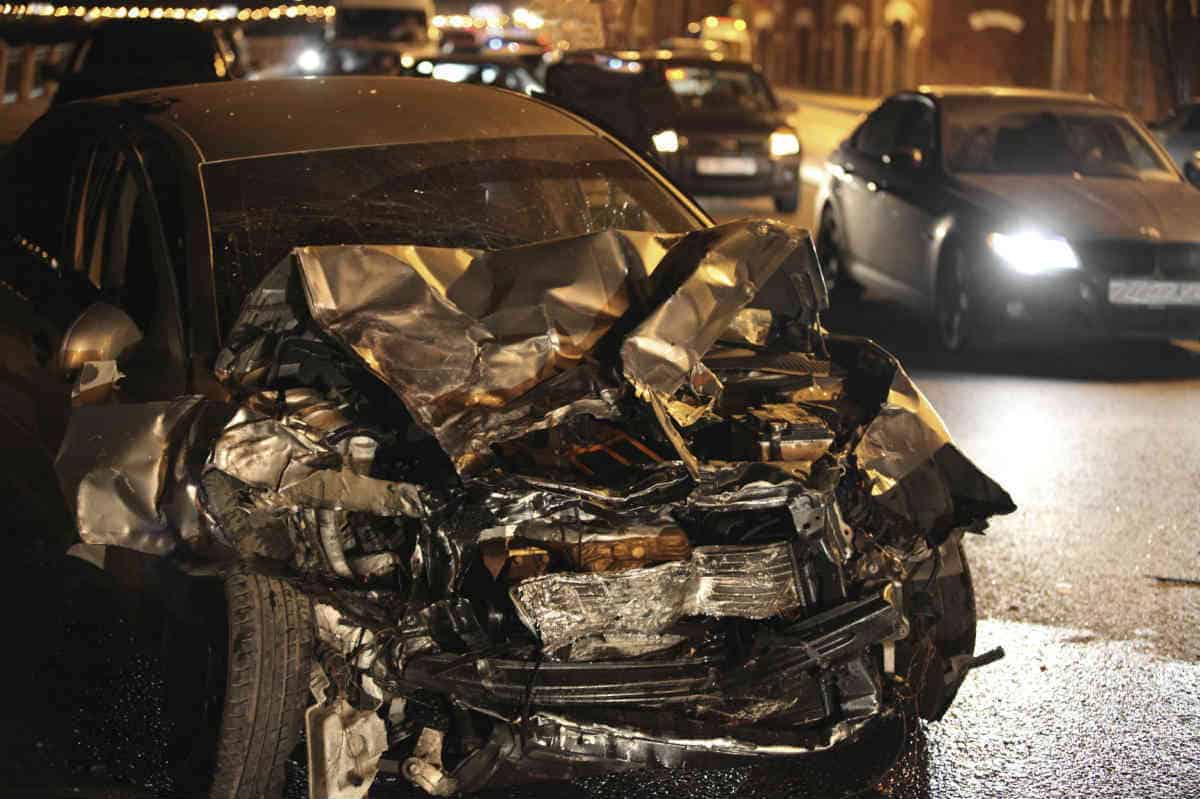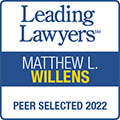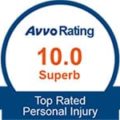All types of car accidents are dangerous but there are few that are as dangerous as head-on collisions.
Also known as a front-impact crash, a head-on car accident occurs when two vehicles driving in opposite directions smash into each other. It is typically due to one driver being on the wrong side of the road, for one or many reasons. They may have lost control of the vehicle, been distracted, intoxicated, or simply made a driver error.
A head-on crash concentrates the maximum amount of momentum and energy into the collision, increasing the risk of injury. It is important to understand why head-on collisions occur, what kind of injuries they can cause, and the damages one can claim after a crash.
If you or a loved one has been seriously hurt in a head-on crash, contact a Chicago head on collision attorney to help you get the compensation you need and deserve. In the Chicago area, the attorneys at Willens & Baez are ready to examine your case for your best legal options.
Reasons Why Head-on Collisions Occur
Head-on collisions can occur because of a variety of reasons. Some common causes are:
- Distracted driving – Despite numerous warnings, many drivers still use their cellphones or other gadgets on the road. With these distractions, they fail to notice that they have veered off their lane, and when they do, it’s often too late to correct their course.
- Speeding – Driving at excessive speeds, especially at a curve, can cause the vehicle to skid onto oncoming traffic.
- Illegal passing – Overtaking at a no-pass zone, or overtaking on the wrong side, invites collisions with road users who have the right-of-way
- Impaired driving – Drugs and alcohol are a common cited cause of head-on collisions. People are more likely to be drunk in the evenings and at nighttime. This increases the risk of nighttime disorientation, causing an impaired driver to enter a lane of oncoming traffic.
- Bad weather – Bad weather conditions, such as snow and fog, can limit visibility.
- Fatigue – Drivers are more likely to be fatigued and drowsy when driving after dark. Avoid driving if you are feeling sleepy or drowsy.
- One-way roads – Failure of a GPS to warn a driver about a one-way road or poor signage indicating a one-way road can lead to a head-on crash.
- Other causes – Debris on the road can cause a driver to swerve, leading to a head-on collision. Sometimes, inadequate road markings can also confuse motorists regarding right-of-way.
Many causes of head-on accidents can be attributed to someone’s negligence. The majority of these wrecks are due to the carelessness of a driver, but there are also cases where other parties are liable. Examples are public road agencies that fail to install crucial traffic markings, and car manufacturers that produce unsafe vehicles.
Having a Chicago head on collision lawyer is invaluable in determining the causes and liable parties in your accident. Insurance companies will conduct their own investigation, but they are known to use tactics geared towards their own revenue. Hire a lawyer who has demonstrated their commitment to injured individuals. Your attorney should leave no stone unturned in fighting for your full compensation.
Common Injuries Caused by Head-On Crashes
Head-on collisions often lead to serious injuries. These crashes are among the deadliest, even though they are not as common as other accident types. In fact, in Illinois alone, head-on collisions ranked third in 2016 in terms of fatal traffic collisions. Within just that one year, there were 113 fatal head-on crashes in the state, on top of the 1,121 injurious head-on accidents.
According to the National Highway Traffic Safety Administration (NHTSA), severe injuries in front-impact collisions occur most often to the head, chest, and abdomen. Some of the most commonly reported injuries are:
- Head injuries – Traumatic brain injuries can occur in a head-on collision, even with the proper deployment of the air bags. Apart from the possibility of serious brain damage and coma, trauma to the head can lead to a host of other conditions. These include eye problems, speech difficulties, headaches, memory problems, movement and coordination problems, and mental issues.
- Neck injuries – The sudden forceful impact of a head-on collision can cause a sudden jerky movement of the body, throwing it forward and then bringing it to a sudden halt. This can lead to severe neck injuries.
- Spine injuries – The discs in our spinal column can get severely compressed and erupt (herniate) in a forceful head-on crash. Herniated discs can cause severe back pain requiring surgery. Another outcome of a spine injury may be paralysis or impaired mobility due to spinal cord damage.
- Broken ribs – Airbags are designed to cushion the blow of a car crash, but in front-impact accidents, they could deploy with too much force and crush a car occupant’s ribs.
- Blunt force trauma – Internal organs in the chest or abdomen area may also be damaged in violent head-on crashes. Vulnerable organs include lungs, shoulders, liver, kidneys, and spleen.
- Disfigurement – Broken facial bones are common in front-impact accidents. When facial injuries result in permanent scars or disfigurement, the victim may include it in their damages claim.
- Bruises and cuts – Shrapnel of crushed metal or plastic and shattered glass can come in contact with the driver and other occupants and cause bruises or cuts.
- Death – Head-on collisions have a high death rate. Even though head-on collisions make up a small percentage of total accidents, they contribute significantly to traffic-related fatalities.
Compensation After A Head-On Car Accident
There are two types of damages you may claim in a car crash case. One is economic damages such as medical expenses, therapy or rehabilitation costs, long-term care, lost earnings, and lost capacity to earn. The other type is non-economic damages, which are less quantifiable but still compensable under the law. Examples are pain and suffering, disfigurement, and emotional distress.
In rare cases, a third type of damages – called punitive damages – may apply. This payment is intended as a punishment for the defendant, not as a reimbursement for the victim’s losses. Courts do not award punitive damages unless the defendant’s actions were exceptionally reckless or willful.
To determine the full amount you may be entitled to, discuss your case with an experienced head on collision attorney in Chicago. At Willens & Baez, we are thoroughly knowledgeable in legal remedies for accident victims. We can apply our experience and knowledge to maximize your compensation, and we work diligently to help you obtain it.
Have You Lost A Loved One In A Head-On Crash?
Due to the deadly nature of frontal collisions, many families sadly suffer the tragic loss of their loved ones. If this type of accident has claimed the life of your family member, and it was caused by someone else’s actions, it may be a wrongful death case.
A successful wrongful death claim may compensate you for losses such as medical bills incurred from the crash, funeral and burial expenses, lost benefits from the deceased, lost consortium (marital companionship), and lost guidance. While no amount of money can replace the life lost, the monetary compensation may help you and your family recover financially from the accident, so you can focus on healing.
Surviving family members may file a wrongful death claim. First in line is the personal representative specified in the deceased person’s estate plan. If there is no personal representative, close family members such as the spouse, parent, or adult child of the deceased can pursue the claim.
Talk to us at Willens & Baez to see how you may be able to claim damages from your loved one’s car crash death.
How to Avoid Head-On Collisions in Car Accidents
Few things are more terrifying than seeing a vehicle driving on the wrong side of the road – and heading straight toward your car. Head-on collisions are extremely dangerous.
Although they comprise only 2 percent of all auto accidents, 20 percent of them are fatal, according to the National Transportation Safety Board. And those that aren’t fatal often result in catastrophic injuries, including head trauma, broken bones, and spinal cord damage.
About 75 percent of all head-on collisions occur on rural roads or undivided two-lane roads. Most often, they are caused by a driver falling asleep at the wheel, driving while distracted, drunk driving, speeding, or failing to negotiate a curve properly.
In big cities like Chicago, head-on collisions commonly happen when a driver fails to yield the right-of-way during a turn, or runs a red light or stops sign.
The good news is that many head-on collisions can be avoided, if you know what defensive actions to take.
You’ll have to take most of these actions in a split-second, so keep them in mind at all times.
- Scan the road. Constantly look at the road ahead of you, taking special notice of upcoming curves or hills. This way, you’ll be able to identify any erratic driving behavior, like a car straddling the middle line or weaving, early on. The more time you have to react to a car straying into your lane, the less likely you are to have a head-on collision.
- Reduce your speed. If you see an oncoming car in your lane, reduce your speed. This can help minimize damage and/or injuries in case of impact. But resist the temptation to slam on the brakes. If you brake too hard, you’ll be in danger of losing control of your car or having another car rear-end you.
- Drive to the right. Your chances of avoiding a head-on collision is increased if you can move as far to the right before the other car collides with yours. This increases the chance that the other driver will go right by you, or will become sufficiently alert to your presence to self-correct.
- Be prepared to ride off the road. If you’ve gone as far right as possible and you still are in danger of being hit, be ready to drive into a ditch, hedge or on the road shoulder.
- Hit a solid object, if necessary. Your chance of survival is much higher if you collide with a stationary object rather than colliding head-on with a moving vehicle. If you find you must hit a solid object, aim as far to the right of the object as possible so that it hits the side of your vehicle.
Willens Law Effectively Helps Accident Victims
Willens & Baez has successfully served injured individuals and bereaved families in Chicagoland. Our legal service in vehicle accident cases has led to their maximum compensation, including:
- A $15.8 million top verdict for a brain injury after a car accident
- A $3 million settlement for a wrongful death after a center line head-on crash
- A $2.25 million settlement for a wrongful death after a truck collision.
Our top-rated lawyers may be aggressive when fighting for our clients’ compensation, but our entire team makes it a point to be considerate during this difficult period in their lives. See how our competent and compassionate service can help you, too. Call us today for a free consultation.
Chicago Automobile Accident Lawyers
If you have been injured in a head-on collision caused by a negligent driver, contact a Chicago car accident attorney from Willens & Baez. Our skilled head on collision lawyers in Chicago will help you recover economic and non-economic damages. Call us today at (312) 957-4166 for a free consultation.












